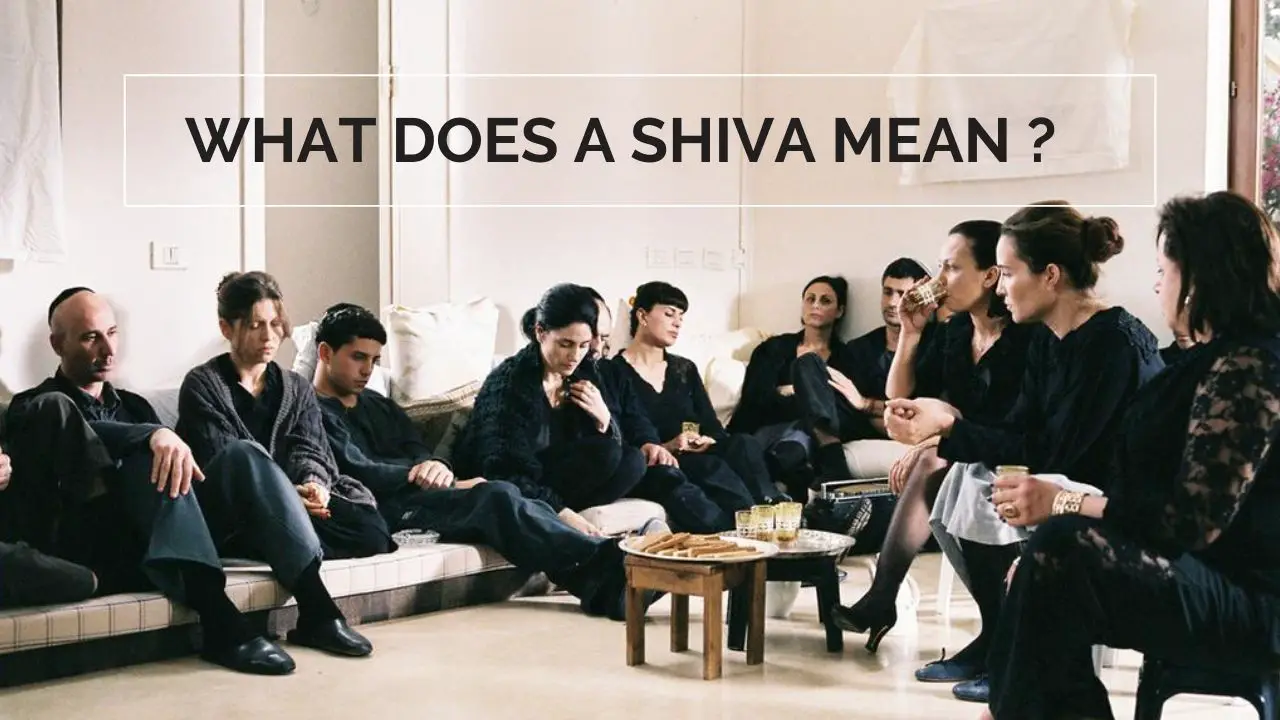What Does Sitting Shiva Mean ?
If you are not Jewish, you’ve probably heard the term “sitting shiva” used before, but you might not know exactly what that means. Shiva is a period that lasts for seven days (shiva is Hebrew for “seven”). The day of burial is included in the shiva period and counts as the first day. In some less traditional communities, sitting shiva is observed for three days.
Parents, siblings, spouse, and children of the deceased sit shiva at the home of the deceased or at one of the mourners’ homes. They go directly to the shiva house from the cemetery, wash their hands before entering (as does everyone who leaves a funeral), light a candle that will remain burning throughout the shiva period, and begin to sit shiva.
Kaddish- The Jewish Funeral Prayer For The Dead
It is Jewish custom that the family and friends physically assist in the burial, throwing clumps of earth over the coffin. Those gathered at the grave then say the Kaddish, a prayer in Aramaic that is commonly used in mourning rituals. Interestingly, this traditional prayer for the dead doesn’t discuss death, it exalts God and appeals for world peace. The Kaddish marks the end of the burial service.
From that point on, when the deceased has been given due respect and the body properly buried, the person who passed away is no longer the focus of attention. The concern now must focus on the mourners, whose sense of anguish at the loss of a loved one does not cease as the last shovel of earth is thrown over the grave. In recognition of mourners’ feelings, and in order to pay proper deference to the memory of the departed one, Judaism has specific procedures in place for the period of mourning.
Jewish Mourning Customs
beyond funeral and burial services, there are other practices that relate specifically to mourning. Jewish mourning customs serve two purposes: to demonstrate respect for the deceased and to provide solace for the mourners. There are four distinct stages of mourning. The first, aninut, encompasses the time period between death and interment. Next is sitting shiva, which begins immediately after burial.
There are a number of observances and prohibitions that should be followed during shiva. The following is a list of some of these interdictions and observances. Mourners should:
- Cover all the mirrors in the house
- Avoid bathing, shaving, or cutting their hair or nails
- Refrain from wearing leather shoes
- Avoid washing their clothes or wearing new clothes (except clothes to be worn on Shabbat)
- Abstain from sexual relations
- Avoid conducting business
- Limit leaving the shiva house
- Sit on a low stool, bench, or on the floor
Some people tear their garments as an act of mourning for a parent, child, sibling, or spouse. Others tear their clothes in mourning for their parents but wear a black ribbon for all other relatives.
A wooden casket (frequently pine) is used in Jewish burials, perhaps because wood decomposes at about the same rate as the body. Therefore, the body can return more rapidly to dust. In Israel, caskets are not used, the body is buried wrapped in a prayer shawl.
Comfort a Jewish Mourner When Sitting Shiva
It is a mitzvah to comfort a mourner, so making a shiva call is encouraged. The first three days of shiva are generally reserved for visits from family and close friends. Those who did not know the deceased as well should hold off until the first three days have passed. However, if a person will not be able to visit later, it is better to visit during the first three days than not at all. Naturally, if shiva is observed for only three days, any time during that period is appropriate.
Because the mourners say their prayers and the Kaddish (prayer of mourning) at the shiva house, they must rely upon guests to make up the minyan. As for decorum, the basic guideline is just to be present, which, in and of itself, brings comfort to mourners. It is more important to listen than to speak, and it is even customary not to say hello or good-bye, since the mourner is forbidden to extend greetings and salutations. However, upon leaving, it is traditional to say to the mourner, “May God comfort you among the other mourners of Zion and Jerusalem.”
What To Do If Someone Dies on Shabbat
Should Shabbat fall within the shiva period, it is counted as a day even though it is not observed as a day of mourning. If a major festival (Rosh Hashanah, Yom Kippur, Passover, Shavuot, or Sukkot) falls during shiva, then shiva comes to an abrupt end. When a death occurs on a major holiday, everything is delayed, including the burial, until the holiday is over.
Shiva ends on the afternoon of the seventh day following a burial. At that time, it is customary for the mourners to leave the shiva house and take a walk, accompanied by friends and family. This excursion indicates that the mourners are ready to return to the external world from which they had withdrawn. At this time, the remaining stages of mourning begin.
What is a Shloshim Mourning?
After shiva, the third period of mourning in the Jewish tradition is called shloshim. This period extends to the thirtieth day after burial (shloshim is Hebrew for “thirty”). During shloshim, some prohibitions that apply to shiva remain in place, including the restriction on cutting nails or hair, wearing new clothes, shaving, attending parties, or listening to music.
During the time of avelut, mourners abstain from parties, celebrations, and other entertainment. However, the mourners should otherwise make it a point to begin their return to a normal life. Other practices are observed in memory of the departed. Throughout the year of mourning, at the end of every prayer service each mourner should recite the Kaddish. Commonly known as the mourner’s prayer, remember Kaddish is really a prayer of praise to God and has nothing to do with death or mourning. The importance of reciting the Kaddish is that it’s performed standing up at public prayer. Through this public exaltation of God, the mourner demonstrates a reaffirmation of faith even after the death of a loved one.
At specific times of the year (Yom Kippur, Passover, Shavuot, and Sukkot), mourners also need to recite the Yizkor prayer. Yizkor (Hebrew for “may [God] remember”) is the abridged popular name for the memorial service, Ha-Zkarat Neshamot (Remembrance of the Souls). At this service, congregants remember their loved ones who have passed on but also commemorate all those who died sanctifying God’s name—for instance, the fighters of Israel’s War of Independence. Some congregations make this an occasion to remember the six million Jews murdered by the Nazis. It is suitable to begin saying Yizkor either at the first holiday after the death of a loved one or at the first opportunity that takes place at the end of the twelve-month mourning period.
Another practice that continues to be observed past mourning is the lighting of a Yahrzeit candle. Yahrzeit occurs on the annual anniversary of the date of death, as set by the Hebrew calendar. At this time, in addition to reciting the Kaddish, a twenty-four-hour candle is lit in the home and, often, in the synagogue in memory of the departed person. This burning light of the Yahrzeit candle is symbolic of the immortal soul.
Jewish law requires a tombstone to mark the grave of the deceased so that the departed one will not be forgotten and the grave will not be desecrated. While the tombstone can be erected anytime after shloshim, in many communities it is customary either to refrain from setting up the tombstone or to keep it veiled until the end of the twelve-month mourning period.
Some time before the end of the year of mourning (usually around eleven months), the mourners hold a ceremony to dedicate the grave marker. This ceremony is generally referred to as an “unveiling” (Ha-Kamat Matzeyvah).
There are no specific requirements concerning how a tombstone must be inscribed. In some communities, it is customary to place small stones on the gravesite when visiting. The origin of this cultural practice is uncertain. A popular explanation states that in the desert environment of ancient Israel, mourners piled stones and rocks to prevent the sandy soil from blowing away and exposing the corpse.


